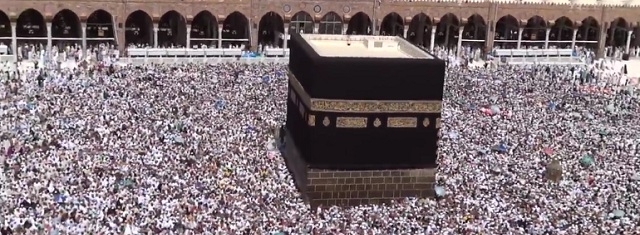Miscellaneous
MUSLIMS OF EVERY ETHNIC GROUP, COLOUR, SOCIAL STATUS & CULTURE GATHER IN MECCA
BETWEEN SEPT. 21 & SEPT. 26, 2015

(Source: Youtube)
USPA NEWS -
The annual Hajj pilgrimage is one of the world's largest gatherings, as hundreds of thousands of people flock to Mecca, Saudi Arabia, to participate in one of Islam's five pillars of faith. Muslims from all over the world will gather together for five days to pray as one community...
The annual Hajj pilgrimage is one of the world's largest gatherings, as hundreds of thousands of people flock to Mecca, Saudi Arabia, to participate in one of Islam's five pillars of faith. Muslims from all over the world will gather together for five days to pray as one community. This year, it is expected to be between September 21 and September 26, 2015.
The pilgrimage to Mecca has been going on since pre-Islamic times, as Mecca's economic prosperity during the time of the Prophet Muhammad was largely due to the income from visitors.
The pilgrimage to Mecca has been going on since pre-Islamic times, as Mecca's economic prosperity during the time of the Prophet Muhammad was largely due to the income from visitors.
Abraham is a figure revered by Muslims, Jews, and Christians alike as a righteous person who lived over four thousand years ago. His story can be found in the Bible as well as the Qur'an (the Muslim holy book). Abraham is considered to be the patriach of monotheism.
In commemoration of the trials of Abraham and his family in Mecca, which included Abraham's willingness to sacrifice his son in response to God's command, Muslims make a pilgrimage to the sacred city at least once in their lifetime. The Hajj is one of the "five pillars" of Islam, and thus an essential part of Muslims' faith and practice.
In commemoration of the trials of Abraham and his family in Mecca, which included Abraham's willingness to sacrifice his son in response to God's command, Muslims make a pilgrimage to the sacred city at least once in their lifetime. The Hajj is one of the "five pillars" of Islam, and thus an essential part of Muslims' faith and practice.
The Hajj is designed to develop God consciousness and a sense of spiritual upliftment. It is also believed to be an opportunity to seek forgiveness of sins accumulated thoughout life.
The pilgrimage also enables Muslims from all around the world, of different colors, languages, races, and ethnicities, to come together in a spirit of universal brotherhood and sisterhood to worship the One God together.
The pilgrimage also enables Muslims from all around the world, of different colors, languages, races, and ethnicities, to come together in a spirit of universal brotherhood and sisterhood to worship the One God together.
Ruby Bird Yasmina Beddou Mecca Spirituality Pelerinage Arab Muslim Allah Pilgrims Modesty Pilar Islam Lunar Calendar Journey Hajj Mohamed Prophet Ibrahim
Liability for this article lies with the author, who also holds the copyright. Editorial content from USPA may be quoted on other websites as long as the quote comprises no more than 5% of the entire text, is marked as such and the source is named (via hyperlink).






